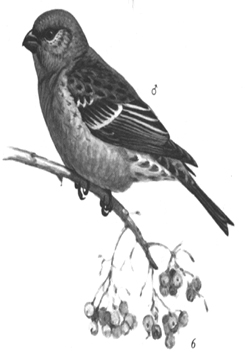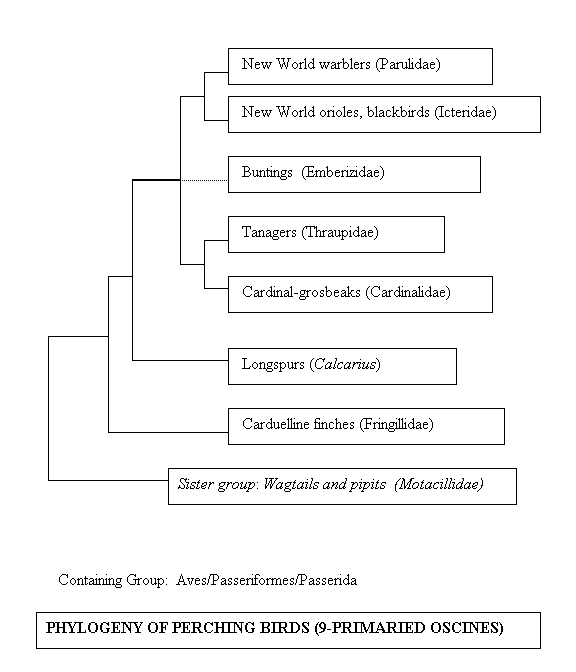Perching Birds: Nine-primaried Oscines
The American wood warblers are among the most boldly colored and popular small birds of the Western Hemisphere. Field and laboratory studies of them have contributed to advances in community ecology, speciation, and feeding behavior. Several species, for example, the Golden-cheeked Warbler in eastern Texas and the Kirtland's Warbler in Michigan, are endangered and play central roles in conservation programs.
The New World oriole and blackbird assemblage includes medium-sized birds as diverse as oropendolas, cowbirds, and meadowlarks. Their equally diverse social systems include dense colonies, harem formation, and obligate brood parasitism. Several species in North America are major agricultural pests.
Buntings and American sparrows are the most familiar buntings in North America. Most species inhabit brushy habitats, but the longspurs are flocking birds of open, short-grass plains. Several species, such as the White-crowned Sparrow and the Song Sparrow, have been the focal subjects of key research on vocal learning and physiology of annual cycles in birds.
Tanagers include most of the small, brightly colored, fruit-eating birds of the New World tropics. They form large, mixed-species flocks, some of which have distinctive color combinations. DNA analyses show that the tanager clade is much larger and inclusive than previously thought. It is a major radiation of ecological types that include the nectarivorous honeycreepers, the Swallow-Tanager (Tersina), and the varied tanager-finches (Sicalis, Oryzoborus), some of which were once considered to be buntings.
The cardinals, grosbeaks, and saltators of the New World are medium-sized seed- and bud-eaters with large powerful bills. Also in this clade are the brightly colored Painted and Indigo Buntings and their relatives.

Figure A–33 Perching birds—Nine-primaried oscines: (1) Yellow-rumped Cacique (Icteridae); (2) Magnolia Warbler (Parulidae); (3) Rose-breasted Grosbeak (Cardinalidae); (4) Magpie Tanager (Thraupidae); (5) Lapland Longspur (Emberizidae). ); (6) Pine Grosbeak (Fringillidae).
